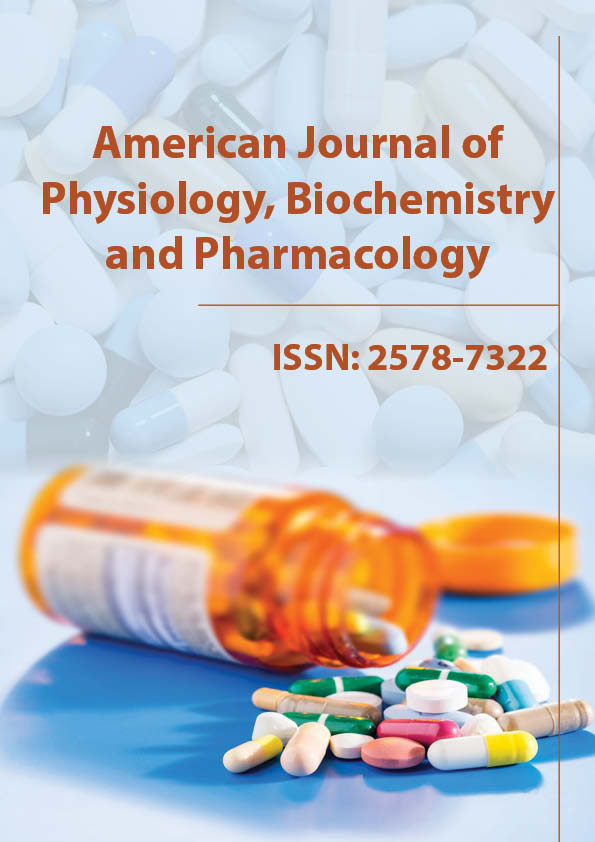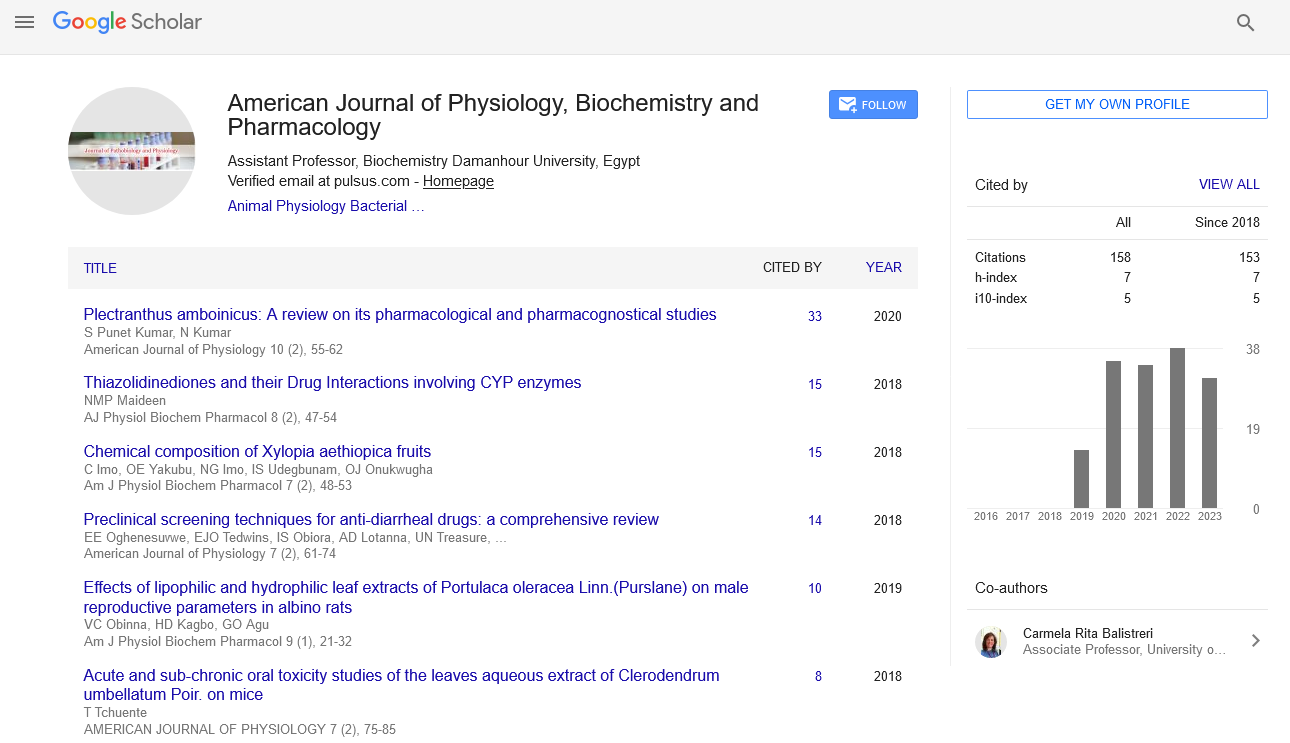Opinion Article - American Journal of Physiology, Biochemistry and Pharmacology (2024)
CRISPR/Cas9: Pioneering the Path to Precision Gene Revolution
Czech Alessia*Czech Alessia, Department of Biochemistry, Wroclaw Medical University, Wroc?aw, Poland, Email: czech222@gmail.edu.pl
Received: 21-Oct-2024, Manuscript No. AJPBP-24-153909; Editor assigned: 23-Oct-2024, Pre QC No. AJPBP-24-153909 (PQ); Reviewed: 07-Nov-2024, QC No. AJPBP-24-153909 (PQ); Revised: 15-Nov-2024, Manuscript No. AJPBP-24-153909 (R); Published: 22-Nov-2024
Description
Clustered regularly interspaced short palindromic repeats and CRISPR-associated protein (CRISPR/ Cas9) is a innovative technology that has revolutionized the field of genetics by enabling precise, targeted modifications to the genome. Originally discovered as a defence mechanism in bacteria, CRISPR/Cas9 has since been harnessed by scientists as a powerful tool for gene editing. Its ability to make highly specific changes to Deoxyribo Nucleic Acid (DNA) has led to significant advancements in genetic research, and one of its most potential applications is in gene therapy. Gene therapy aims to treat or prevent disease by modifying the genes within an individual’s cells, and CRISPR/Cas9 offers a more efficient, accurate, and affordable method compared to traditional approaches.
How CRISPR/Cas9 works
The CRISPR/Cas9 system consists of two key components: Cas9, an enzyme that acts as a molecular scissors to cut DNA, and guide Ribonucleic Acid (gRNA), a short RNA sequence that directs Cas9 to a specific location in the genome. The guide RNA is designed to match the target DNA sequence, ensuring that Cas9 cuts the DNA at the correct site. Once the DNA is cut, the cell attempts to repair the break. This repair process can be harnessed to either introduce a desired change, such as correcting a mutation, or to disrupt a harmful gene, such as one that causes a disease.
CRISPR/Cas9 in gene therapy
The primary application of CRISPR/Cas9 in gene therapy is to correct genetic defects that cause inherited diseases. These genetic disorders, many of which were previously considered untreatable, can potentially be treated using CRISPR/Cas9 by directly editing the genes in patient cells.
Treating monogenic diseases
One of the most promising applications of CRISPR/Cas9 in gene therapy is its ability to treat monogenic diseases—disorders that arise from mutations in a single gene. For instance, sickle cell disease and beta-thalassemia are both caused by mutations in the gene that codes for haemoglobin, a protein in red blood cells. CRISPR/Cas9 has been used in clinical trials to edit the haemoglobin gene in hematopoietic stem cells (which produce blood cells) to correct the mutation.
Cancer treatment
CRISPR/Cas9 also holds potential in the fight against cancer. One approach is to edit immune cells, such as T-cells, to enhance their ability to recognize and destroy cancer cells. In CAR-T cell therapy, T-cells are modified to express Chimeric Antigen Receptors (CARs) that target cancer- specific antigens. CRISPR/Cas9 can be used to improve this process by knocking out inhibitory genes in T-cells or adding genes that enhance their cancer-fighting capabilities. This approach has already shown success in treating certain types of blood cancers, such as leukaemia, and is being explored for solid tumors as well.
Genetic enhancement and preventative therapy
Beyond treating existing diseases, CRISPR/Cas9 could be used for genetic enhancement—the modification of genes to improve health or prevent diseases before they manifest. For example, scientists have proposed using CRISPR/Cas9 to edit the genes of embryos to prevent inherited diseases, such as Duchenne muscular dystrophy or Huntington’s disease. While controversial and heavily regulated, this approach could one day be used to eliminate hereditary diseases from families and prevent the transmission of genetic disorders to future generations.
Ethical and safety concerns
While CRISPR/Cas9 presents enormous potential for advancing gene therapy, its use raises several ethical and safety concerns. One of the most significant concerns is the risk of off-target effects, where CRISPR/Cas9 might cut DNA at unintended locations, potentially causing harmful mutations. Although improvements in the accuracy of CRISPR/Cas9 have reduced the likelihood of off-target effects, further research is needed to ensure the technology’s safety
Conclusion
CRISPR/Cas9 has revolutionized gene therapy, offering unprecedented opportunities to treat a wide range of genetic disorders, from monogenic diseases to complex conditions like cancer. Its precision, efficiency, and versatility make it a powerful tool for genetic medicine, with the potential to change the landscape of healthcare. However, its widespread use must be carefully regulated to address ethical concerns and ensure patient safety. As research continues to advance, CRISPR/Cas9 could clear the route for treatments that can cure genetic diseases, enhance human health, and improve the quality of life for millions of people.






